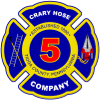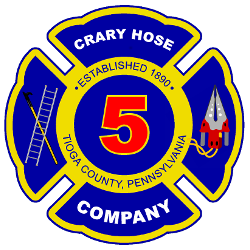In Fire and EMS world, there are three main categories of incidents: medical calls, motor vehicle accidents/rescue calls and fires/hazmat calls. If you listen to dispatch radio traffic, you will recognize these calls by the number of beeps that follow the plectron dispatch tones: one beep for medical, two beeps for MVA, three beeps for a fire. “Three beepers” typically happen less-frequently, but required a different team approach, skillset, and collection of tools and equipment. They also typically present the firefighter with the highest level of personal risk. At the end of the day, these calls are why firefighters become firefighters. Fighting fire is the main reason we all show up. The adrenaline rush of hitting the fire head-on and making the push to save life and property. These also tend to be the incidents that bond our group together; the glue that holds the department together. Any firefighter will tell you that you can detect a distinct difference in the mood at the firehall when too much time has passed between “three beepers.” It is a mixture of frustration and anxiety. Training and drilling is the way we keep the crew sharp and the bonds tight when the calls don’t come.
At Crary Hose, this takes the form of Monday drill nights. Two to three Monday night’s each month, we spend a few hours training, practicing our skills, testing our equipment, and functioning as a team. We have been taking advantage of the summer-like weather in June by getting our apparatus out, pumping water and running hose lines.
Last week we practiced initial attack, hose line management and hitting the hydrant for high-volume water source at Westfield Elementary. Engine 5-3 was the attack engine. Attack 1 pulled a 2″ hose line and started flowing water quickly after arriving on-scene, with Engine 5-2 laying 5″ from a nearby hydrant and making the connection on the hydrant side to provide 5-3 with a large volume water source. Firefighters were able to practice skills and get some nozzle time, while reviewing assignments, responsibilities, equipment and tool locations, and communications.
For last night’s drill, we brought Ladder 5-9, Engine 5-2 and Tanker 5-5 to the Cowanesque Valley High School. We practiced filling and drafting from the drop tank, with Engine 5-2 assigned to water supply and Ladder 5-9 flowing water from the elevated master stream. Tanker 5-5 practiced dumping and filling. These drills allow us to train in different roles than we usually fill on the fireground, broadening our skillsets. Everything from running the pumps, to backing up trucks, to rolling and loading LDH.
Training like this not only keeps our firefighters fresh, but it also allows us to verify the proper operation of our equipment and identify any maintenance issues prior to an emergency situation. If you want to ruin a firetruck, don’t use it for a few months. It is vital that we test, check, and train on our equipment on a continual basis. As the old saying goes, “If you don’t use it, you lose it.”
Interested in joining us and becoming a volunteer firefighter or junior firefighter? It is as easy as stopping in to the Firehall any Monday night at 7pm. We’ll provide the gear, the training, and the experience. All that we need from you is to commit a few hours a week. It is the best job in the world, and we are fortunate that we get the privilege of doing it.
Thank you to all members for giving your time and your talents to the community.














